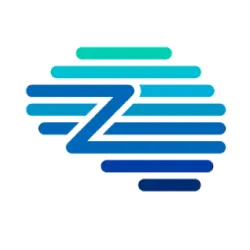Every procurement transformation begins with an honest assessment: where are you today, and where do you need to go? The autonomous sourcing maturity model provides a framework for understanding your current capabilities and planning your evolution toward intelligent automation. Unlike generic digital transformation frameworks, this model focuses specifically on the capabilities needed to succeed with autonomous tail spend sourcing.
TL;DR
- The Autonomous Sourcing Maturity Model helps assess your current procurement capabilities and chart a roadmap toward intelligent automation.
- There are four maturity levels: Manual Operations, Assisted Procurement, Automated Procurement, and Agentic Procurement.
- Progressing through each level requires a mix of technology, data readiness, user adoption, and strategic change management.
- Skipping maturity levels leads to failed implementations—success lies in phased growth and capability validation.
- True autonomy is achieved through multi-agent orchestration, continuous learning, and strategic alignment.
- Start with an honest assessment, avoid shortcuts, and commit to building a scalable, autonomous sourcing operation layer by layer.
Maturity Assessment: Where Do You Stand?
Answer the following questions to see your maturity level:
1) Technology Foundation
Q: How are your procurement transactions currently processed?
- Paper-based or basic ERP
- eProcurement system with limited integration
- Intelligent intake and predictive analytics
- Multi-agent orchestration with autonomous workflows
2) Process Automation
Q: What percentage of your tail spend sourcing is automated?
- <20% (Mostly manual)
- 20–50% (Assisted automation)
- 50–90% (High automation)
- 90%+ (Fully autonomous)
3) Data & Analytics Capability
Q: What describes your analytics approach?
- Basic reporting, limited insights
- Descriptive analytics with some predictive elements
- Predictive analytics driving decisions
- Real-time predictive and prescriptive insights
4) Organizational Readiness
Q: How ready is your team for autonomous sourcing?
- Limited leadership support, low user adoption
- Leadership buy-in, basic change management plans
- Strong adoption programs, advanced training
- Culture of innovation, continuous optimization mindset
Your Result:
- 🟢 Mostly 🟢: Level 1 – Manual Operations
- 🟠 Mostly 🟠: Level 2 – Assisted Procurement
- 🔵 Mostly 🔵: Level 3 – Automated Procurement
- 🟣 Mostly 🟣: Level 4 – Agentic Procurement
See recommendations for your level below.
The Four Levels of Autonomous Sourcing Maturity
Level 1: Manual Operations
- Traits: Paper-based processes, spreadsheet tracking, email approvals.
- Challenges: High processing costs, maverick spend (15–25%), and 1–3 week cycle times for routine purchases.
- Next Step: Lay a digital foundation with eProcurement tools and workflow automation.
Level 2: Assisted Procurement
- Traits: eProcurement systems, electronic approvals, supplier portals.
- Wins: 30–50% faster processing; maverick spend reduced to ~10–15%.
- Gaps: Limited intelligence in decision-making, reactive supplier management.
- Next Step: Introduce predictive analytics and intelligent intake capabilities.
Level 3: Automated Procurement
- Traits: Intelligent intake, predictive analytics, automated RFQs and approvals.
- Wins: 80–90% digital adoption, 5–10% maverick spend, advanced analytics for strategic insights.
- Gaps: Autonomous decision-making still requires manual oversight.
- Next Step: Deploy Agentic AI for full autonomy in sourcing workflows.
Level 4: Agentic Procurement
- Traits: Multi-agent orchestration, autonomous sourcing, real-time adaptation.
- Wins: 95%+ straight-through processing for tail spend, <2% maverick spend, and procurement teams shifting focus to strategic value creation.
- Outcome: Procurement becomes a business enabler, driving competitive advantage.
Transformation Roadmap: Advancing to Autonomy
Level 1 → Level 2: Build the Foundation
- Timeline: 6–12 months
- Deploy eProcurement and electronic workflows
- Train users, drive adoption
- Enable basic system integrations
- Success Metrics:
60%+ digital adoption
30% faster processing
50% better compliance
Level 2 → Level 3: Integrate Intelligence
- Timeline: 9–15 months
- Add advanced analytics and intelligent automation
- Standardize processes, enhance integrations
- Success Metrics:
80%+ automation for routine tasks
50% less manual effort
Predictive insights driving decisions
Level 3 → Level 4: Achieve Autonomy
- Timeline: 12–24 months
- Implement Agentic AI and multi-agent orchestration
- Activate autonomous decision-making and continuous learning
- Success Metrics:
95%+ straight-through processing
70%+ procurement team focus on strategy
Real-time market responsiveness
Success Factors for Advancing Maturity
Common Success Drivers (All Levels)
- Leadership & Governance: Strong executive sponsorship and a clear change management strategy.
- Organizational Readiness: User engagement, process standardization, and improved data quality.
- Vendor Partnership: Alignment on strategic goals and ongoing performance reviews.
- Cultural Adaptation: Building a mindset for technology-enabled transformation.
Level-Specific Priorities
Level 1 → Level 2: Foundation Success
- Prioritize user adoption and quick wins to build momentum.
- Standardize processes and plan integrations with future scalability in mind.
Level 2 → Level 3: Intelligence Success
- Ensure data quality to enable advanced analytics.
- Optimize processes and provide advanced training for sophisticated tools.
Level 3 → Level 4: Autonomy Success
- Define and test autonomous parameters carefully.
- Strengthen exception handling and monitor continuous learning systems.
- Maintain alignment with strategic objectives throughout.
Common Pitfalls and How to Avoid Them
Technology-First Approaches
The Problem Organizations often select advanced technology without establishing foundational capabilities, leading to implementation failures and user resistance.
The Solution
- Maturity assessment before technology selection
- Capability building aligned with current state readiness
- Phased implementation that builds on previous successes
- User-centric design that prioritizes adoption and value
Underestimating Change Management
The Problem Technical implementation succeeds but user adoption fails, resulting in limited value realization and transformation stagnation.
The Solution
- Comprehensive change strategy from project inception
- User involvement in design and testing processes
- Training programs that build competence and confidence
- Support systems that ensure ongoing success
Skipping Maturity Levels
The Problem Organizations attempt to jump from Level 1 to Level 4 without building intermediate capabilities, resulting in implementation failures and wasted investment.
The Solution
- Incremental advancement through each maturity level
- Foundation building before advanced capability deployment
- Success validation at each level before progression
- Capability assessment to ensure readiness for advancement
Conclusion
The Autonomous Sourcing Maturity Model isn’t just a framework; it’s a roadmap to transforming tail spend from a cost drain into a strategic advantage.
Success depends on honest assessment, phased planning, and disciplined execution. Organizations that move systematically up the maturity curve unlock not only efficiency but also the strategic freedom for procurement teams to focus on value creation.
The lesson? Don’t skip steps. Shortcuts often lead to expensive technology that fails to deliver. Instead, build capabilities layer by layer to ensure lasting impact.
Where does your organization stand today? And how ready are you to step into the future of autonomous procurement?
The time for incremental fixes is over. In a market defined by speed and intelligence, your transformation journey begins with one step: assessing where you are today and committing to systematic advancement.
Related Reads:
- A CPO’s Guide to Agentic AI in Procurement
- How to Build Your First Agentic AI Use Case in Procurement
- Autonomous Sourcing: Speed & Savings in Procurement
- Beyond Dashboards: Why Visibility Alone Is Not Strategy
- What Makes an Autonomous Negotiation Agent Truly Intelligent?
- Intelligent Intake is the Gateway to Autonomous Negotiation
- The Hidden Cost of Tail Spend: Why Manual Negotiation Doesn’t Scale
- How to Write an Effective RFP for Autonomous Sourcing
- Bolt-On vs Built-In: The Architecture Behind Sustainable Automation











































